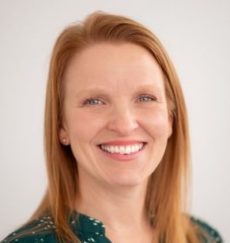
With all the talk of impending acquisitions this spring, it’s hard not to think of skilled nursing facilities as commodities to be bandied about for the right price — or shuttered if they don’t produce enough “value.”
But providers certainly shouldn’t see themselves in that light, given the critical space they fill in the healthcare continuum and the thousands upon thousands of medically complex patients who depend on them.
The best protection for operators who don’t want to be scavenged for parts and raw materials?
Get some skin in the game.
That was the message across the board at this week’s Synergy Summit, where executive leaders from some of the nation’s largest and most innovative LTC providers gathered to network and share game plans for post-pandemic success.
During the final session Wednesday, Ensign Services Vice President Jess Dalton hosted some of the very people putting the squeeze on long-term care: payer executives. But instead of blaming them for increasing pressures on a struggling industry, Dalton positioned creative payer organizations as a possible lifeline.
Dalton paraphrased AHCA President and CEO Mark Parkinson in encouraging providers to take a larger ownership role within the industry.
“He told us, if you continue, ‘you’ — being Ensign or skilled nursing operators or owners — if you continue to go down the trail or the track of simply being a commodity service in the healthcare sector, that may be a surefire way to see a quick end to what you’re trying to achieve,” said Dalton, who oversees strategic alignment and care transformation for Ensign. “The answer to getting beyond a commodity within the healthcare industry is of course to own and to take on risk and to own that risk and to own those lives.”
In post-acute care, arguably the most-fragmented of healthcare sectors, it can be hard to envision how alignments in which you share responsibilities with other types of providers will pay off in the long run. After all, alternative payment models haven’t historically been helpful to skilled nursing providers. Hospitals notoriously save money by reducing SNF referrals in favor of home health or requiring shorter lengths of stays.
Still, partners who have shared values — including revenue sharing and non-dollar goals — are proving creative approaches can pay off.
But in keeping with the non-commodity theme, I’d take Dalton’s comments one step further. Just as providers shouldn’t want to be seen as commodities, patients won’t want to be seen as “lives” providers can somehow own.
In the struggle for limited dollars, don’t lose sight of who you’re looking to protect. Is it your bottom line, or is it your patients and the communities that depend on your long-term viability? No matter who you align with, the answer must be “both.” So when you’re ready to dive into risk-sharing as a way to drive value, just make sure it’s your own skin you’re risking.
Losing sight of individual patient lives or shortchanging them under pressure from a new partner can only lead to short-term dissatisfaction and long-term reputational damage — factors that will put you squarely back at risk of becoming an entity to be bought and sold.
Kimberly Marselas is senior editor of McKnight’s Long-Term Care News.




